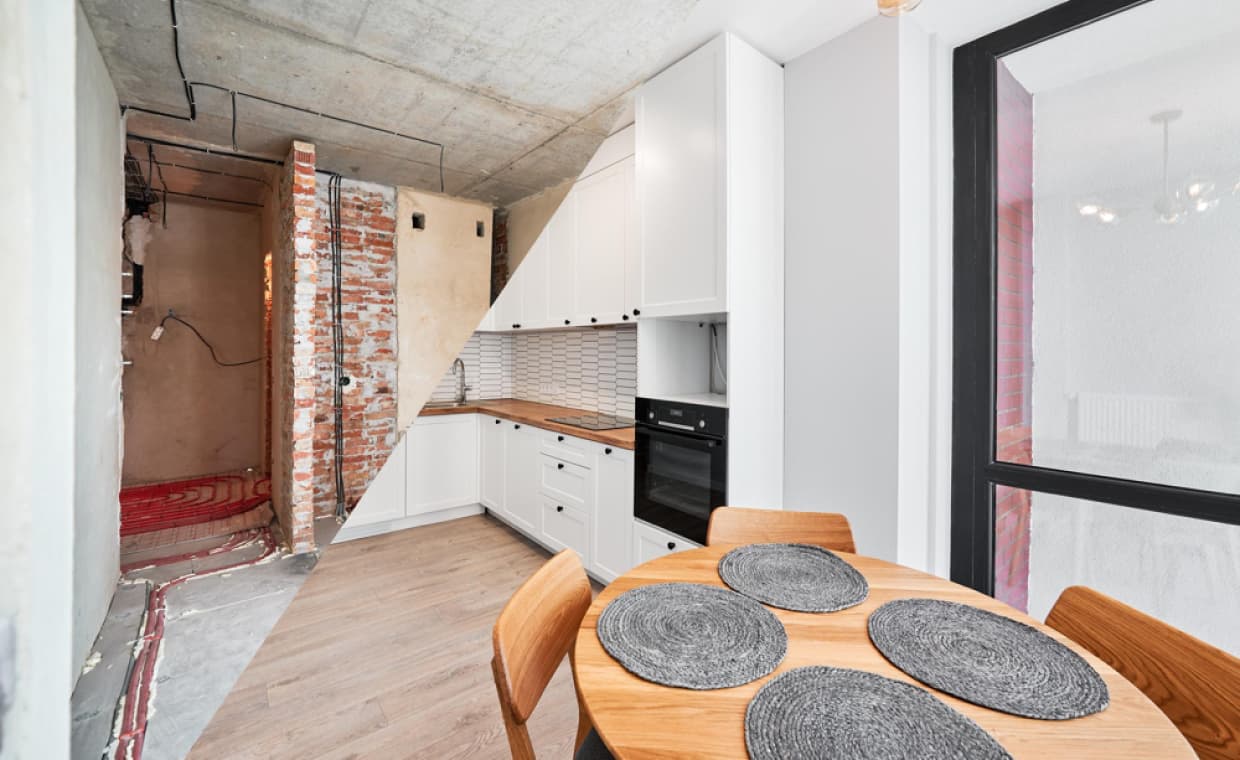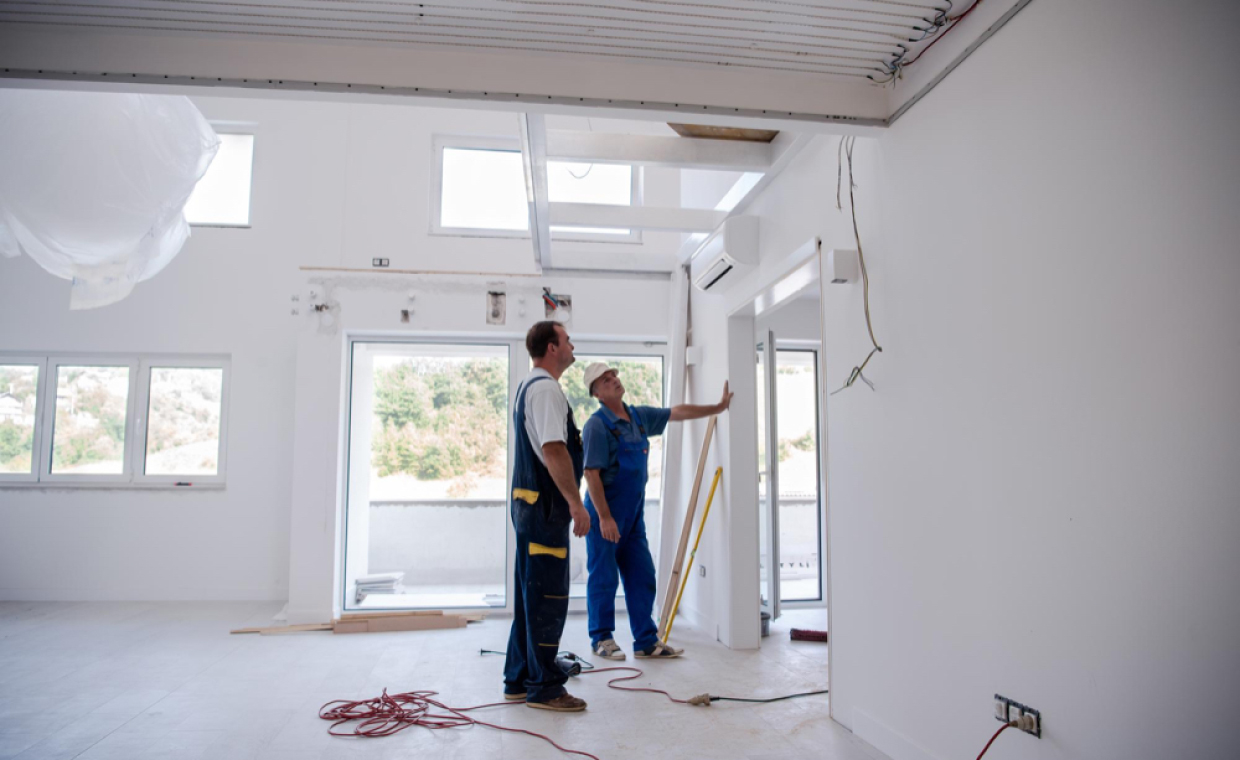
Table of Contents
Quick Summary
- Importance of evaluating structural stability before Remodelling
- Difference between load-bearing and non-load-bearing walls
- Assessing foundation strength and signs of weakness
- Roof load capacity when altering or upgrading
- Role of beams, columns, and support systems in safety
- Compliance with building codes and permits
- Compatibility of old and new construction materials
- Value of professional evaluation by engineers or contractors
- Mistakes to avoid, like skipping permits or misjudging loads
Remodelling a home can be exciting-it’s an opportunity to improve functionality, add comfort, or modernize outdated spaces. But while new layouts, finishes, and design ideas often take center stage, many homeowners overlook the most important factor: Structural Considerations Before Remodelling Your House.
Before you knock down a wall or add a new floor, it’s critical to understand how the existing structure works and what changes may affect its safety. Ignoring these considerations can lead to costly repairs, code violations, or even structural failures. Here are the key structural factors to evaluate before Remodelling your home.
1. Load-Bearing vs. Non-Load-Bearing Walls

Not all walls are created equal. Some are purely partitions, while others carry the weight of floors, roofs, or upper levels. Load-bearing walls transfer loads from the roof or upper stories down to the foundation. Removing or altering them without proper support can cause cracks, sagging, or even collapse.
Case Example: A family in New Jersey removed a wall to create an open kitchen without consulting an engineer. Within months, they noticed ceiling cracks and sloping floors. They later had to spend thousands on retrofitting steel beams to restore stability.
Non-load-bearing walls can generally be modified more easily, but they may still conceal plumbing, electrical wiring, or HVAC ducts. Always consult a structural engineer or qualified contractor before removing or modifying walls, no matter how “minor” the project seems.
Also Read: Insight into Types Of Load-Bearing Walls | Features To Look
2. Foundation Strength
Every Remodelling project ultimately depends on a solid foundation. Adding new loads-such as a second story, heavy stone finishes, or expanded living space-requires assessing whether the foundation can carry additional weight. This makes foundation strength before renovation one of the most critical aspects to evaluate.
Look for signs of weakness such as:
- Cracks in walls or basement floors
- Uneven or sloping floors
- Water seepage in the basement
- Doors or windows that stick or won’t close properly
In some cases, underpinning or reinforcement may be necessary before major renovations. Skipping this evaluation could compromise the entire structure.
Also Read: Types of Building Foundations: Design, Uses & Essentials
3. Roof Structure and Load Capacity

Many remodels involve attic conversions or roofline changes, such as adding dormers or skylights. Roof structures are carefully designed to handle specific loads, including snow and wind. Alterations without reinforcement can weaken the system.
- Truss roofs are not designed to be cut or altered without professional guidance.
- Stick-framed roofs may allow more flexibility but still require calculations for new loads.
According to a roofing company in NYC, one of the most common mistakes homeowners make is underestimating the impact of added weight-from new insulation, heavier roofing materials, or even rooftop amenities. In dense urban areas, roof integrity directly affects safety, energy efficiency, and property value. Professional assessment ensures that upgrades not only meet building codes but also extend the lifespan of the structure.
4. Beams, Columns, and Support Systems

Beams and columns are the silent workhorses of a home’s structure. Shifting or removing them without proper redistribution of loads can destabilize the entire building.
Replacing a wall with an open-concept space usually requires installing a steel or engineered wood beam. Temporary shoring must be used during construction to prevent sagging or collapse.
Homeowners often underestimate the cost of these reinforcements, but skipping them can create hidden risks that emerge years later.
5. Building Codes and Approvals

Every structural modification must comply with local building codes. These regulations exist to ensure safety and durability. Permits are typically required for:
- Wall removals or modifications
- Additions and extensions
- Major changes to foundations or roofs
Skipping permits may save time initially, but it can create problems during resale, insurance claims, or future renovations. A failed inspection can also lead to fines and expensive corrections.
6. Material Compatibility
When Remodelling, new materials must work in harmony with existing structures. Pairing lightweight framing with heavy masonry can create imbalances. Mixing old and new concrete requires careful bonding to prevent cracking.
Example: Adding stone veneer to an old exterior wall without accounting for extra weight can strain the foundation or cause the wall to bow. Similarly, using modern drywall on older framing without moisture control can lead to mold or deterioration.
Material mismatches often lead to premature deterioration or structural weakness, so compatibility checks are vital.
7. Professional Evaluation

While cosmetic updates like paint and fixtures may be DIY-friendly, structural Remodelling is not. Consulting with a licensed contractor, structural engineer, or architect ensures that plans are safe, feasible, and code-compliant.
As one of the leading general contractors in New Jersey notes, early evaluation often prevents costly changes mid-project and provides peace of mind that the remodel will stand the test of time.
Conclusion
Remodelling your home is an investment in comfort and value-but it should never come at the expense of safety. By considering foundations, walls, roofs, beams, materials, and building codes before making structural changes, you ensure that your dream remodel is both beautiful and secure.
Remember: while design decisions shape how your home looks, structural considerations before Remodelling your house determine how long it lasts.
Also Read: Budget-Friendly Home Improvement Products to Give Your House a New Look
FAQs: Homeowner Questions Before Remodelling
Q1. How Do I Know If A Wall Is Load-Bearing?
Check your floor plans or look in the basement/attic-load-bearing walls usually run perpendicular to joists. When in doubt, always call a professional.
Q2. Can I Remodel Without Pulling Permits?
Only very minor cosmetic work (like painting or flooring) may not require permits. Anything structural almost always does.
Q3. What’s The Biggest Mistake Homeowners Make?
Underestimating how small changes (like removing a single wall or adding a skylight) affect the entire system. Every part of a structure works together.
Also Read: House Renovation: 8 Signs That Your Home Needs a Revamp!






























